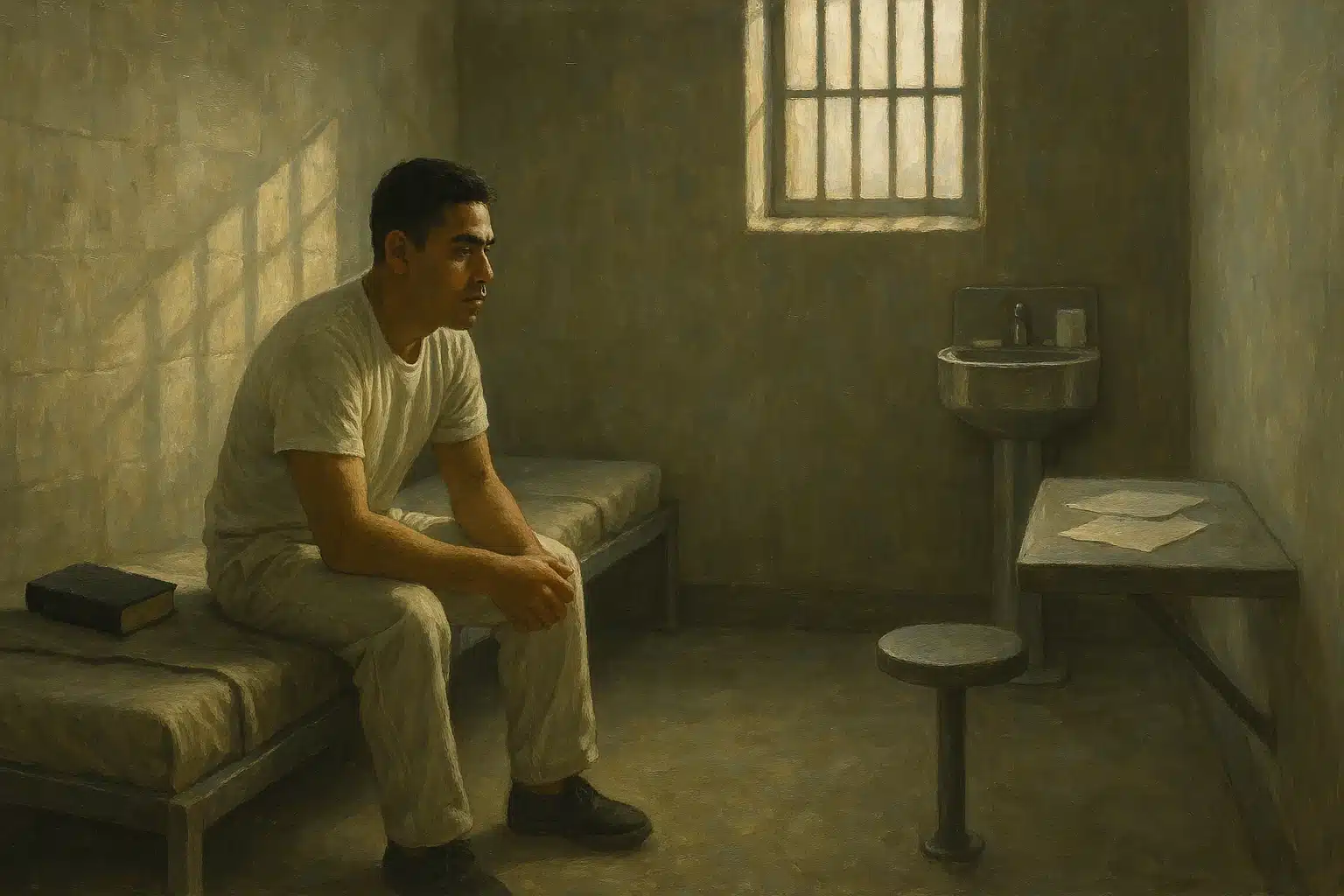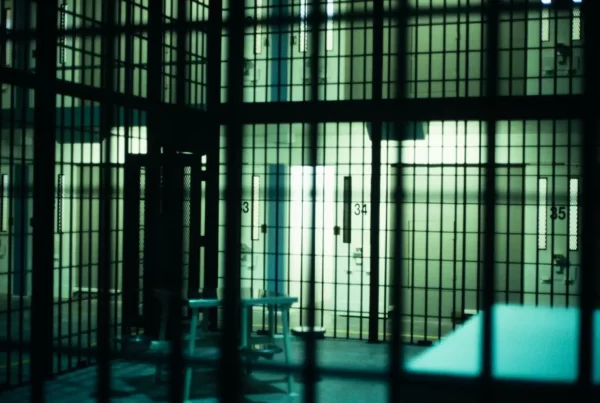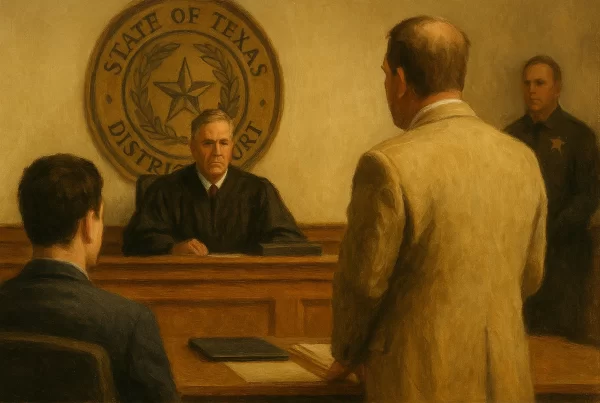In Texas, jails are detention facilities that house individuals arrested for misdemeanor offenses or those accused of crimes but not yet convicted. Jails serve as the entry point into the criminal justice system, holding individuals after their arrest but before trial.
Jails are operated by county governments under the supervision of elected county sheriffs, with regulatory oversight from the Texas Commission on Jail Standards.
In total, there are about 230 county jails or jail systems in Texas (some counties have more than one jail facility), slightly less than one per county. Some rural counties opt to board their inmates in an adjacent county rather than maintain their own facilities. Of the 254 counties in Texas, 20 counties did not have their own jail as of 2024.
Life in Jail
Daily life in jail is highly structured with a set routine. Inmates begin their day with simple meals served in a communal area. Inmates may also purchase snacks, hygiene products, and stationery through the jail commissary.
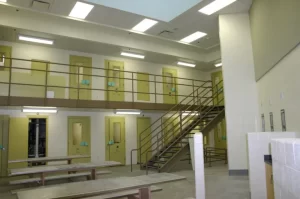
Inmates may have limited recreation time, such as in a day room or outdoors, and spend most of their time in their cells with little personal space. Activities like reading, writing, or educational programs may be available, but access is often restricted. Inmates can communicate with family and friends through phone calls or written correspondence, though it may be monitored.
Jail life is marked by strict rules, limited privacy, and little personal freedom, making it a challenging environment. Because jail stays are often short, the inmate population turns over rapidly, creating an environment of constant movement and uncertainty.
Jails vs Prisons
While the terms “jail” and “prison” are often used interchangeably, they have distinct legal meanings. Unlike prison populations, many people in county jails have not been convicted and are legally presumed innocent while awaiting trial. Jails hold people waiting to be charged, or awaiting trial, as well as those serving short sentences, whereas prisons are for individuals convicted of crimes and sentenced to longer terms.
In Texas, individuals arrested must be brought before a judge or magistrate and informed of the charges within 48 hours of their arrest. Jails hold criminal suspects during this time, awaiting their first appearance before a judge, who will decide on charges or release.
Jails and prisons are operated by different types of government. Generally, jails are operated by county governments, whereas all prisons in Texas are operated by the state government through the Texas Department of Criminal Justice (TDCJ).
All persons in the custody of the state prison system have been convicted of a crime, whereas many people housed in county jails are awaiting charges or awaiting trial.
County vs State Jails
Most jails in Texas are run by county governments, but the state also operates a limited number of facilities known as ‘state jails.’ These facilities house individuals convicted of low-level felony offenses, in contrast to county jails, which primarily hold misdemeanor offenders and pre-trial detainees.
The legislature created the ‘state jail felony’ category in 1993 to cover certain drug crimes, property offenses, and other mid-level violations. Sentences in state jails are capped at two years, though courts often impose probation or community supervision instead of incarceration.
Functionally, state jails resemble minimum-security prisons and are administered by the Texas Department of Criminal Justice.
Jail Standards in Texas
Jail standards in Texas are set by statute and by regulations created by the Texas Commission on Jail Standards and codified in the Texas Administrative Code.
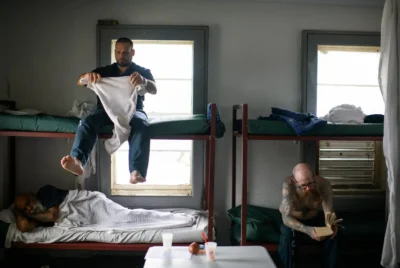
These standards include:
- Jail cells for one person only must have a clear floor area of 40 square feet or more .
- Any other housing area must have a clear floor area of 18 square feet or more per prisoner.
- Jail cells or dormitories for three or more persons must be accessible to a day room to which prisoners may be given access during the day.
- A county jail cell designed for one prisoner only must have a toilet, a combination sink and drinking fountain, a table, and a seat.
- A housing area designed for three or more prisoners must have one toilet and one combination sink and drinking fountain for every eight prisoners to be confined in the area.
- Prisoners in county jails are entitled to a bunk with a clean, comfortable mattress and enough clean blankets for the prisoner’s comfort.
- Each inmate shall be allowed one hour of supervised physical exercise or physical recreation at least three days per week.
- Inmates confined longer than ten days shall be allowed access to sunlight no less than one hour weekly.
- Food must be served three times in any 24-hour period. No more than 14 hours shall pass between meals without supplemental food being served.
- Inmates must be provided with access to medical and mental health care. This includes prescription medications and screening for mental illness or substance abuse.
It’s up to the counties that operate jails to comply with these standards, which also include a minimum jailer-to-inmate ratio, facility standards, and documentation requirements.
County jails are subject to inspections from the Texas Commission on Jail Standards to ensure compliance with the minimum state standards, though such inspections are relatively rare. Counties may also adopt standards that are more stringent than the state minimums.
Sandra Bland Act Reforms
In a small town in southeast Texas in 2015, an African-American woman was found hanged in her jail cell, days after her arrest during a traffic stop. The death of Sandra Bland, a 28-year-old Chicago native, triggered protests, an FBI investigation, and multiple lawsuits. Bland’s name became a rallying cry in the Black Lives Matter movement.
Though her death was ruled a suicide, dampening speculations of foul play, subsequent investigations found policy lapses at the jail where Bland had been held, called into question her arrest, and uncovered clear warning signs that might have prevented her death.
Outrage over Bland’s death culminated in landmark state criminal justice legislation in 2017. The unanimously approved Sandra Bland Act (SB 1849) was one of several new laws that year that sought to address the nexus of mental health, substance abuse, and the criminal justice system.
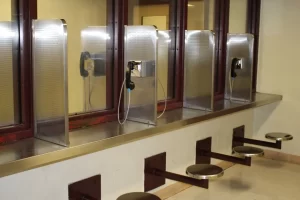
The Sandra Bland Act revised jailer training standards and required jails to have automated sensors to ensure that jailers did timely cell checks. The law also established a “good faith effort” standard requiring jailers to divert people suffering a mental health crisis or substance abuse issue.
However, jails were given several years to meet some of these new requirements, and some aspects of the law have taken effect only recently. In the meantime, county jails in Texas continue to operate largely without oversight, apart from the supervision of local sheriffs.
The Texas Commission on Jail Standards has just four field inspectors to cover more than 200 jails and an inmate population of more than 63,000. According to a November 2020 report by the state’s Sunset Advisory Commission, “the agency’s inspection and enforcement processes do not adequately and efficiently mitigate risk in jails,” and “when the agency does find violations, its limited enforcement process does not deter prolonged or repeat noncompliance.”
Similarly, a November 2020 Sunset report on the Texas Commission on Law Enforcement, the agency that regulates county jailers, said that “state’s current regulation is, by and large, toothless.”
Jail Population of Texas
Texas jails have a collective capacity of nearly 95,000 beds. In 2024, Texas county jails collectively operated at 73% capacity, holding 71,235 inmates at a given time, according to data from the Texas Commission on Jail Standards.
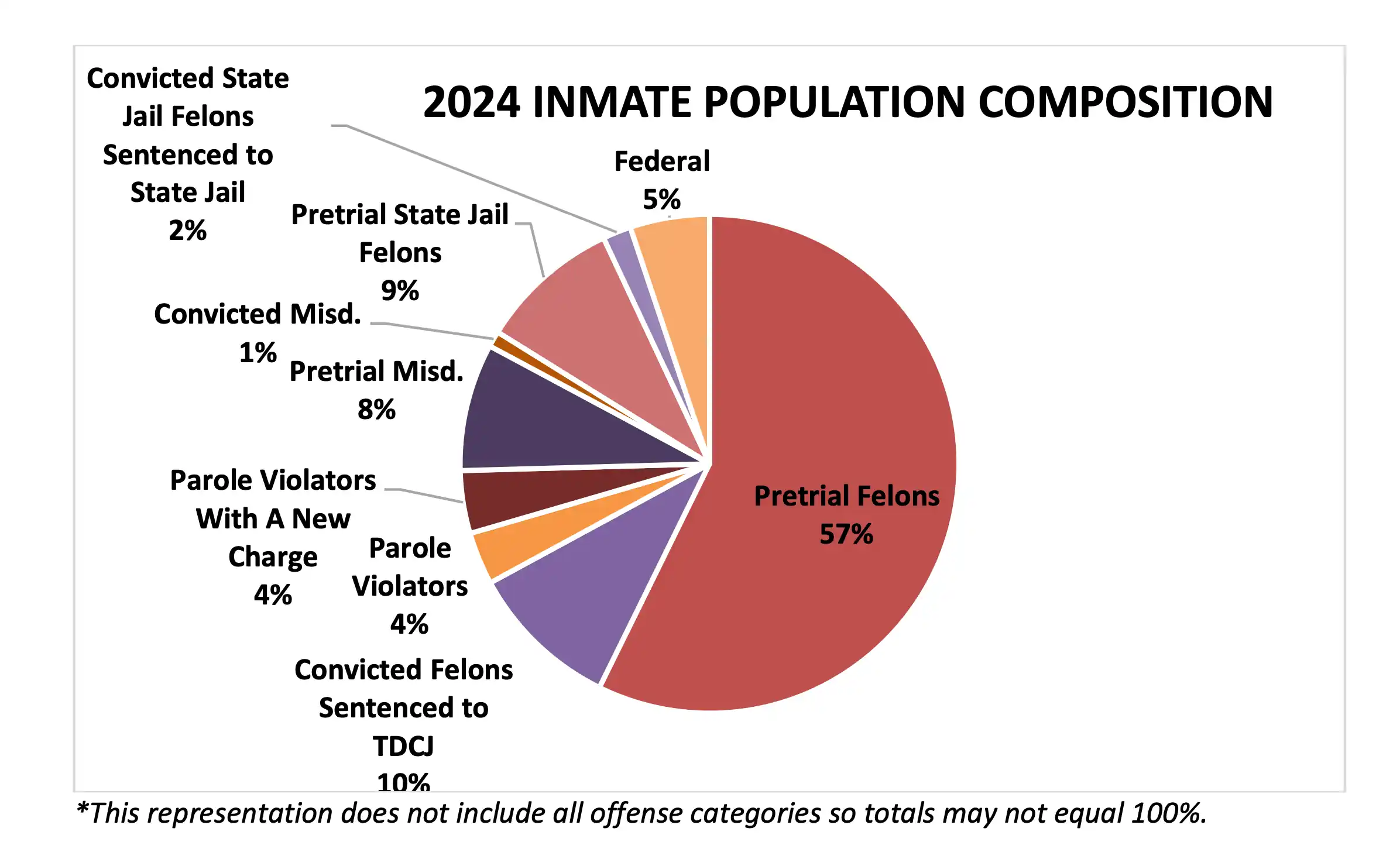
The majority of inmates in Texas jails are pre-trial defendants accused of felony crimes. Others are pre-trial defendants for misdemeanors, who have yet been charged, or who have have not posted bond; defendants awaiting transfer to federal custody for suspected immigration violations or other crimes; defendants awaiting transfer to the Department of Criminal Justice, following conviction at trial; and parole violators.
Frequently Asked Questions
There are about 230 jail systems in Texas, approximately one for each of the state’s 254 counties. Some of these contain multiple facilities while others contain only one jail.
County jails in Texas house pre-trial defendants as well as defendants convicted of misdemeanors. They do not house convicted felons, who are kept in state prisons.
Each county jail falls under the supervision of a county sheriff who employs correctional offers to operate the facility.
